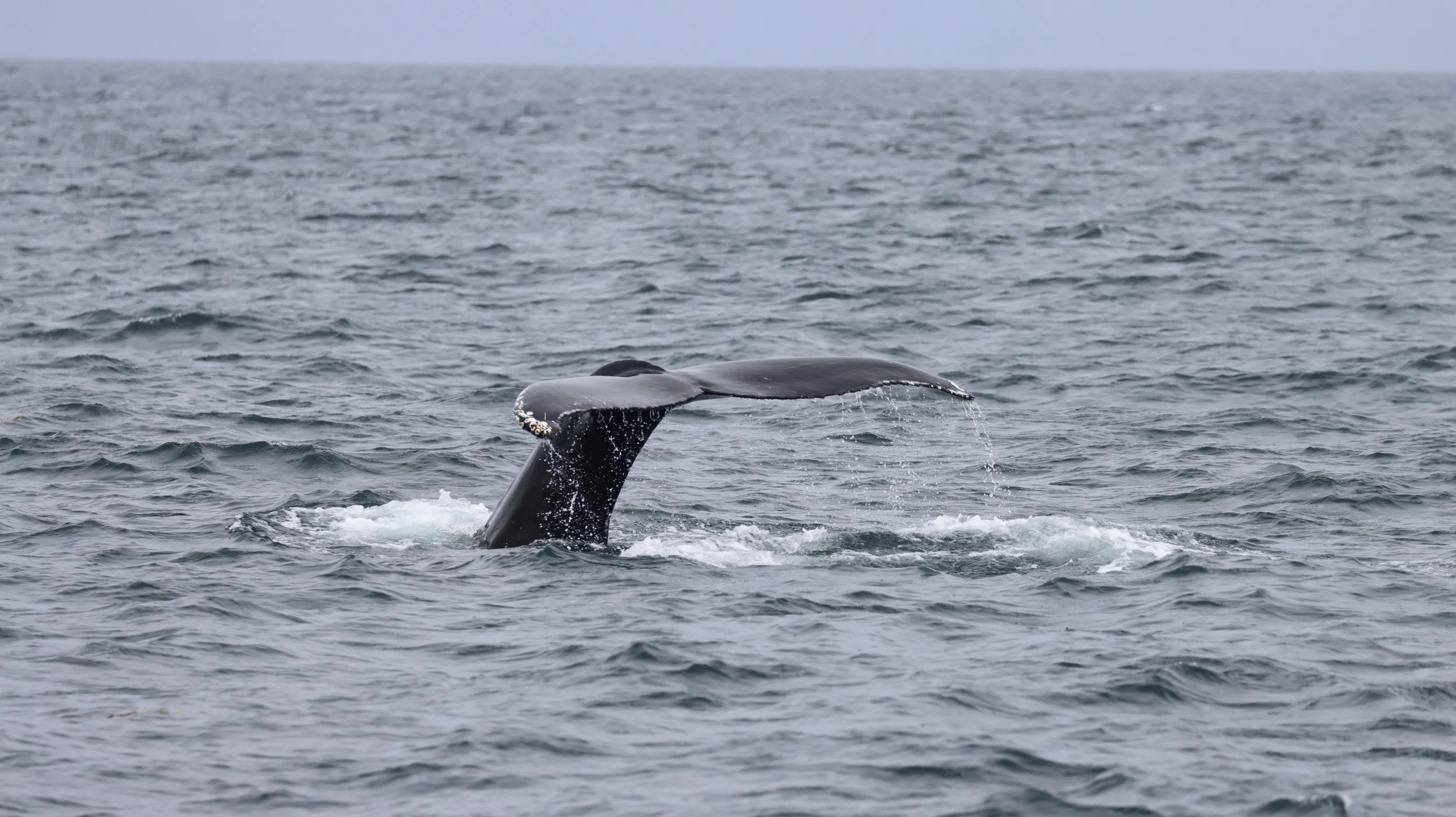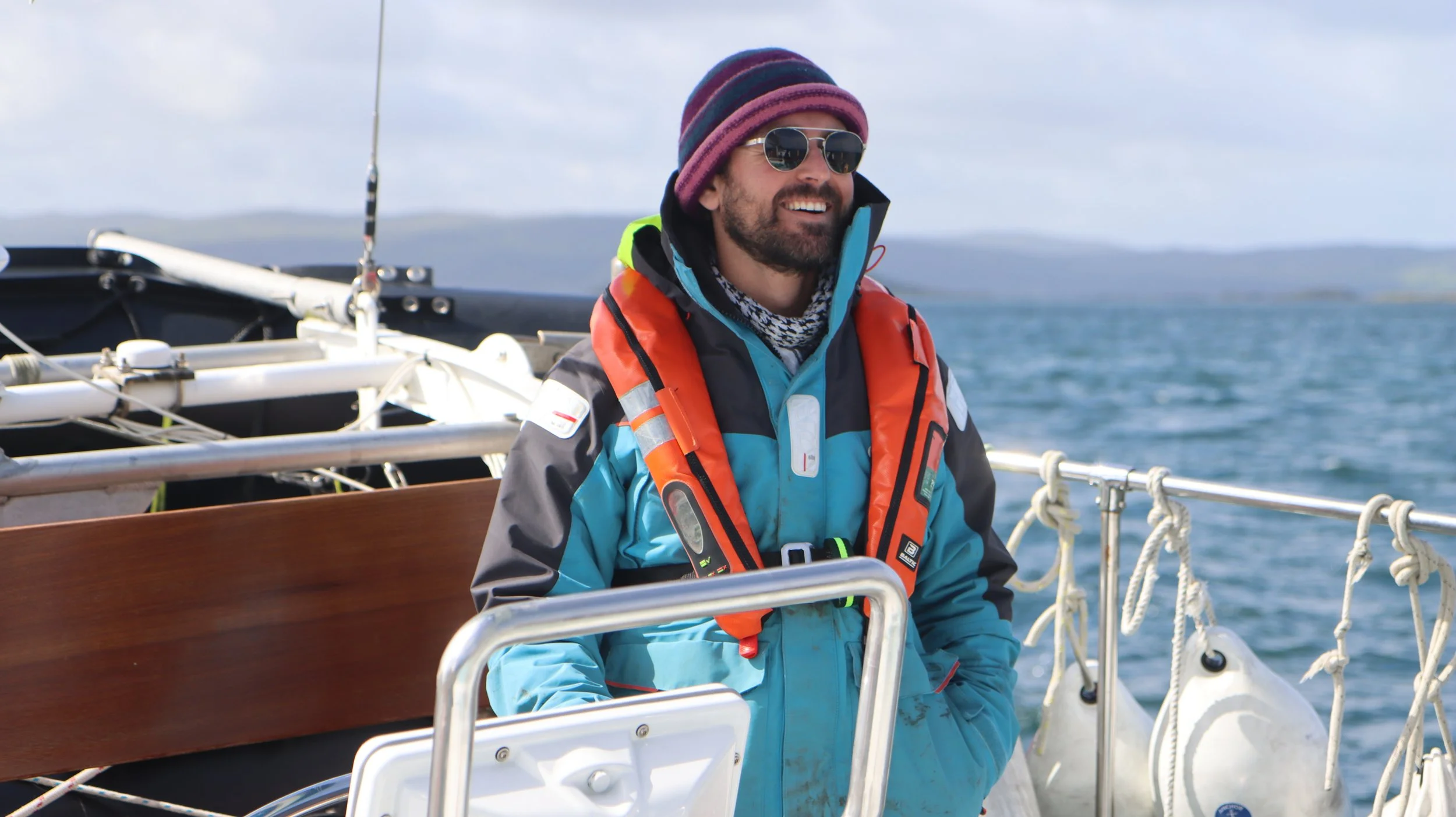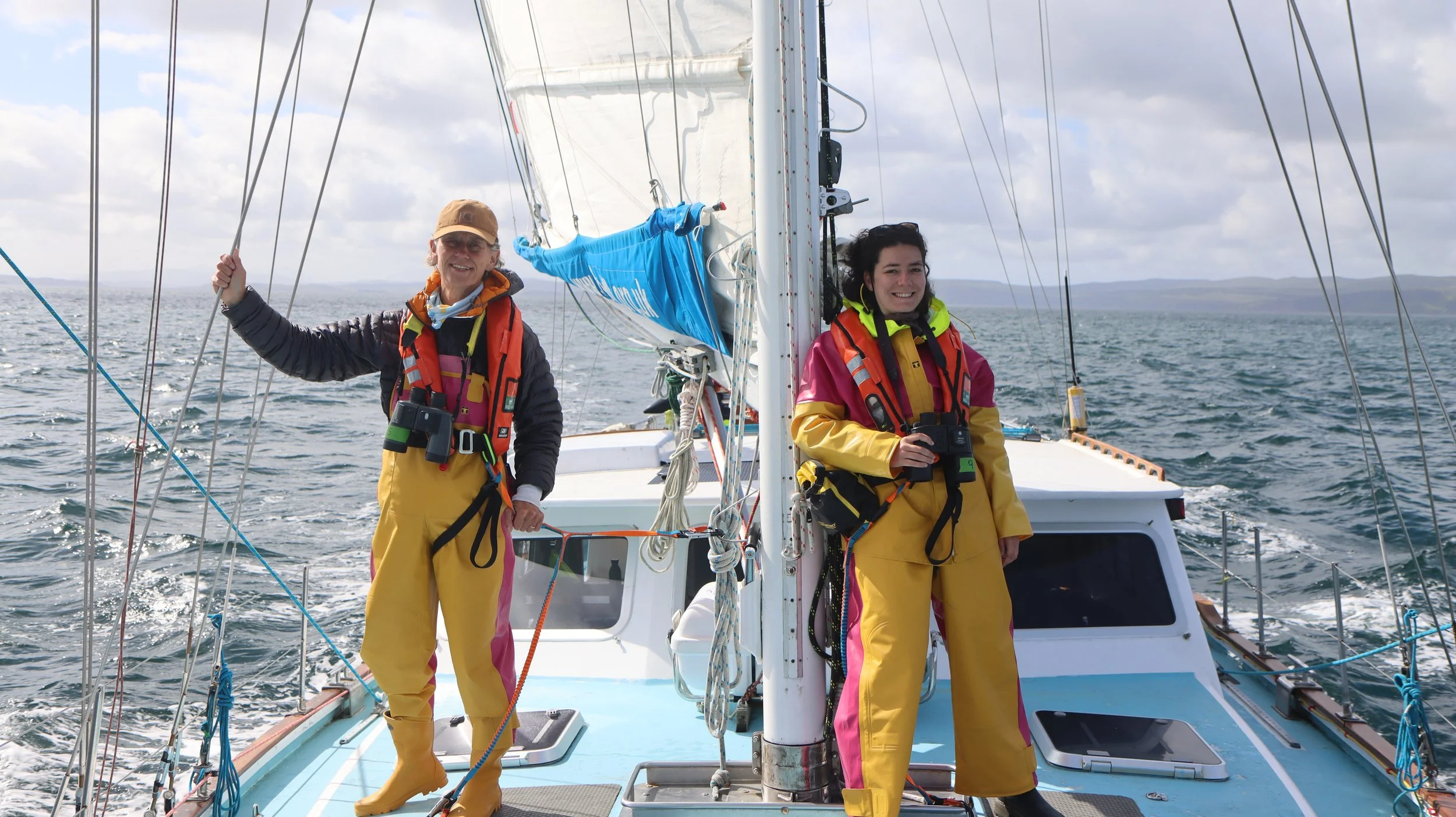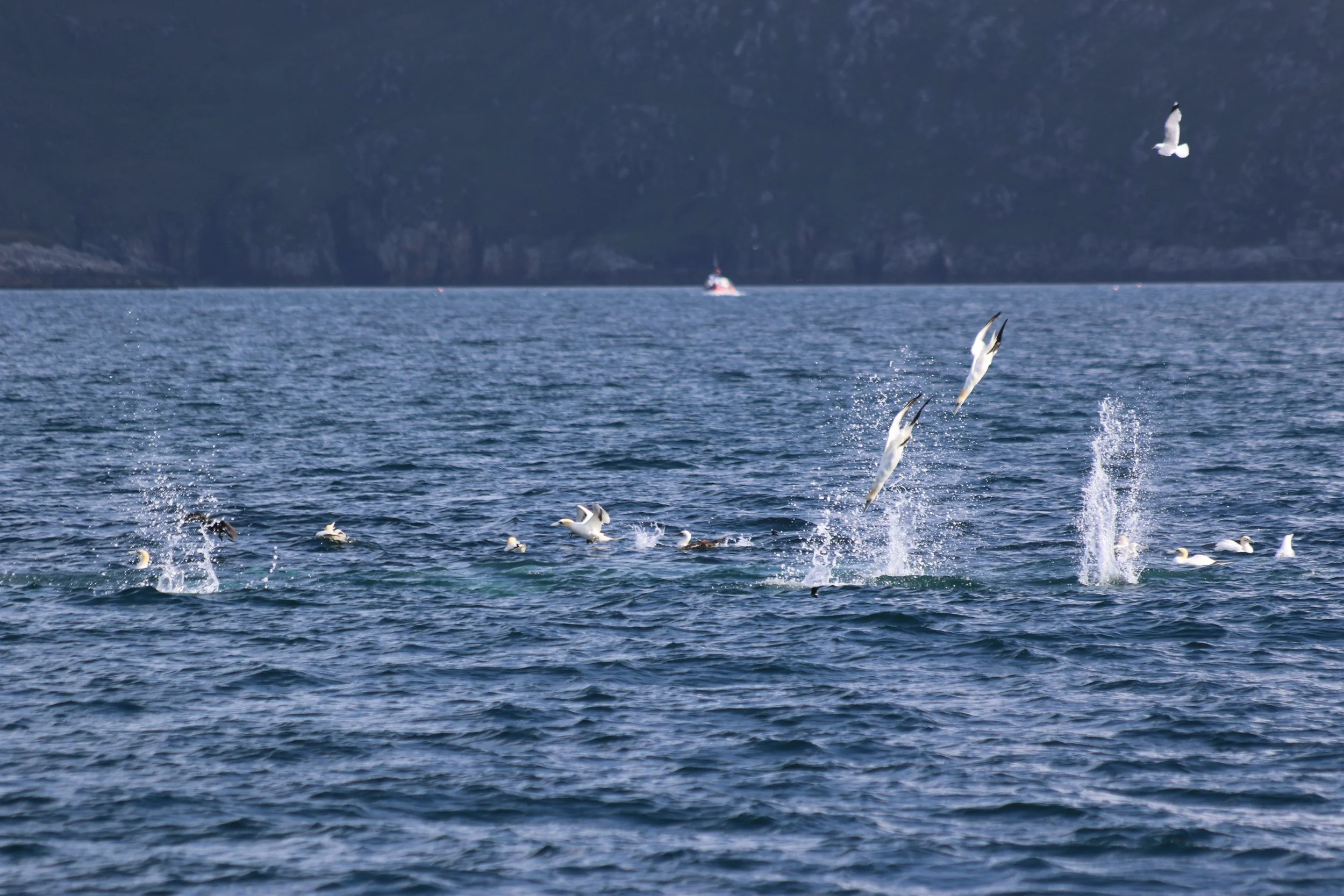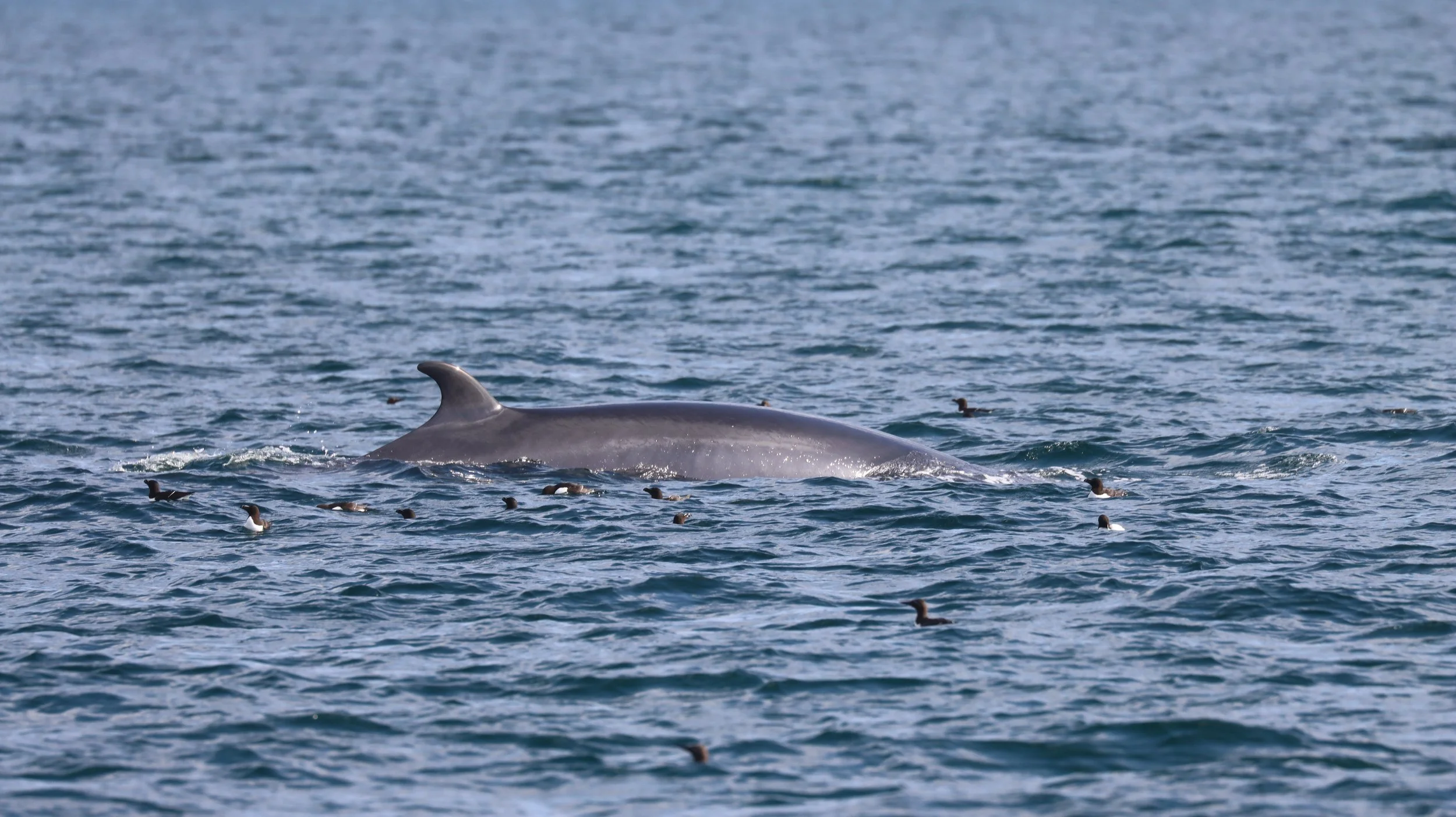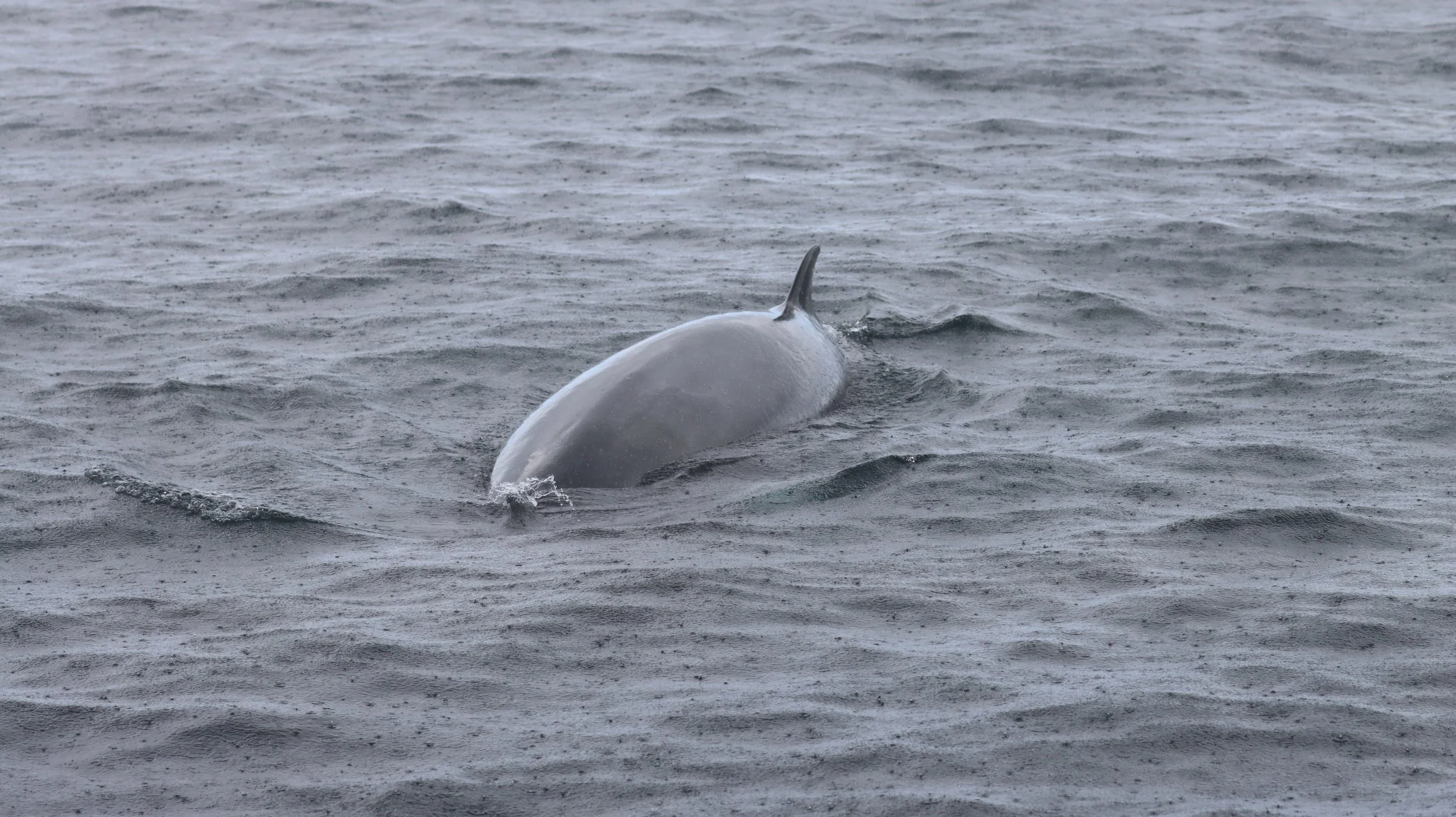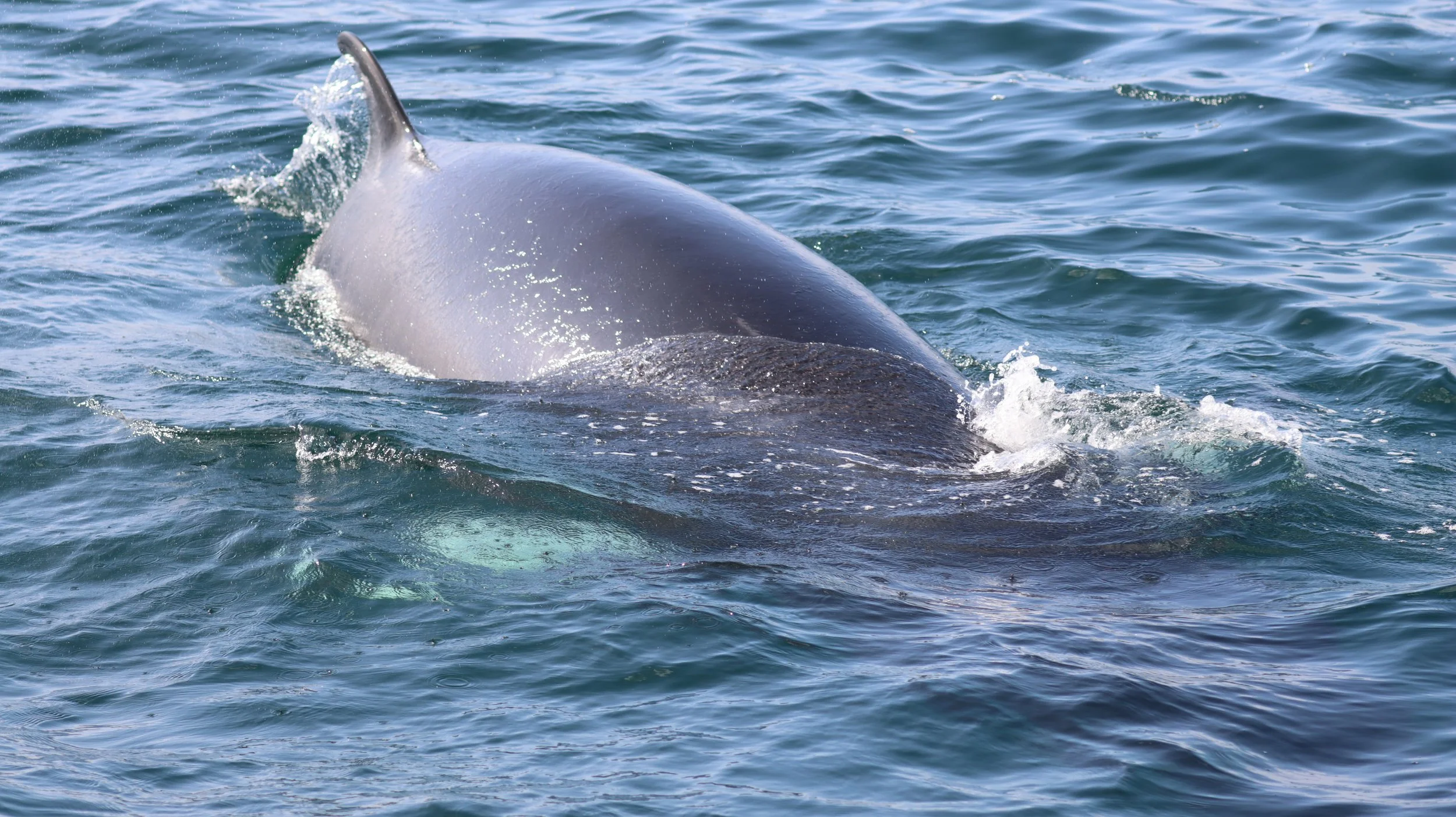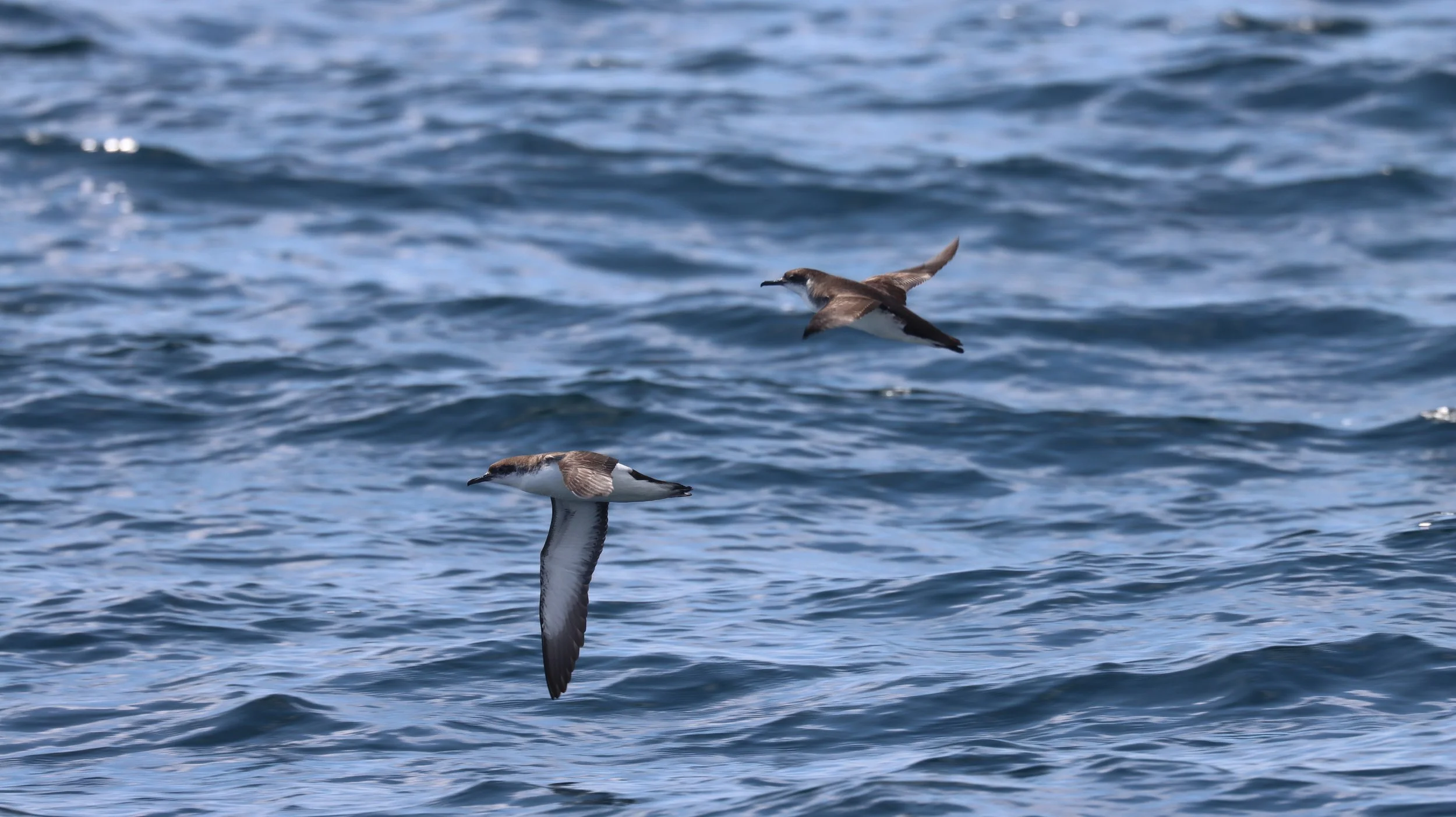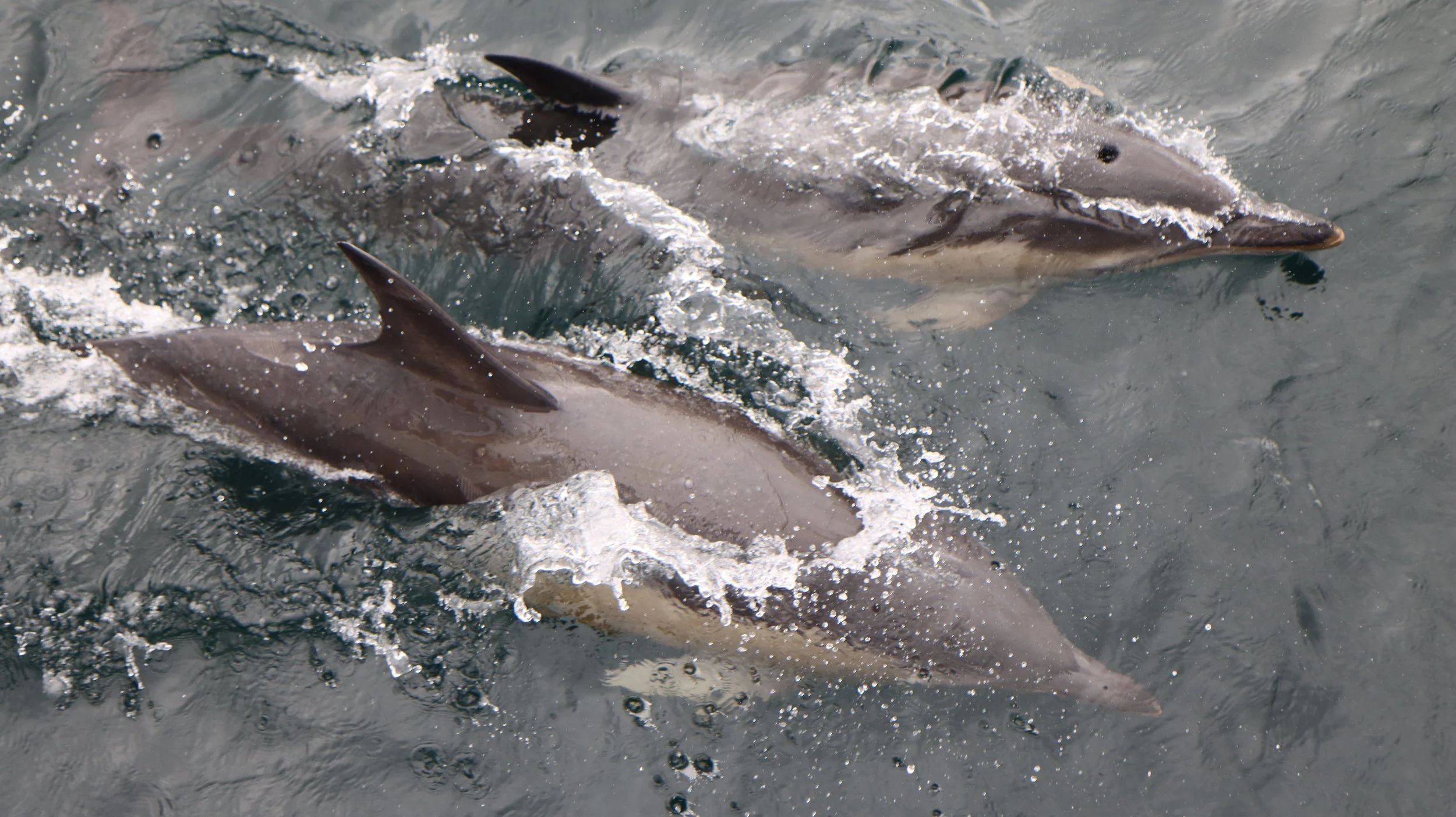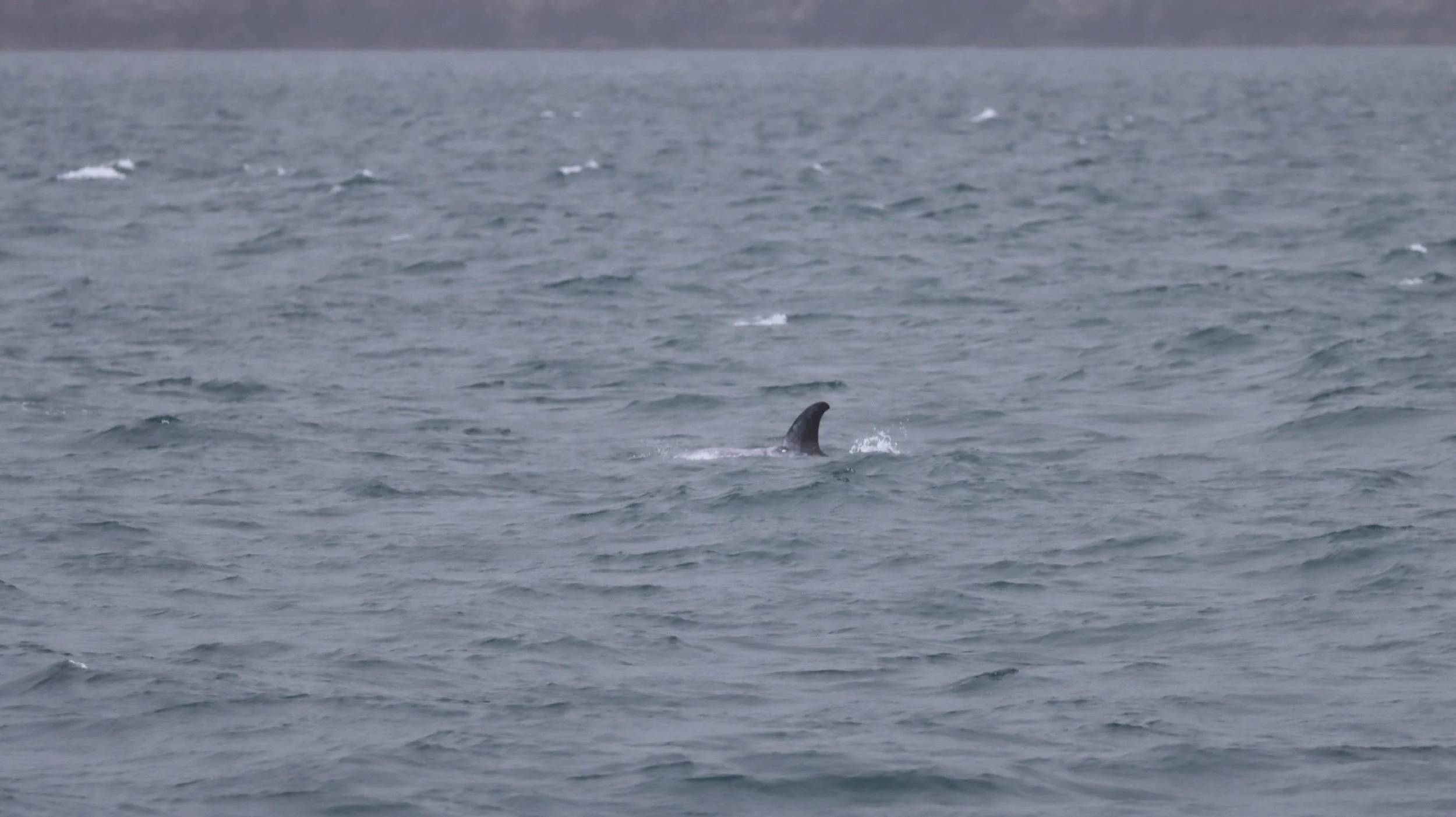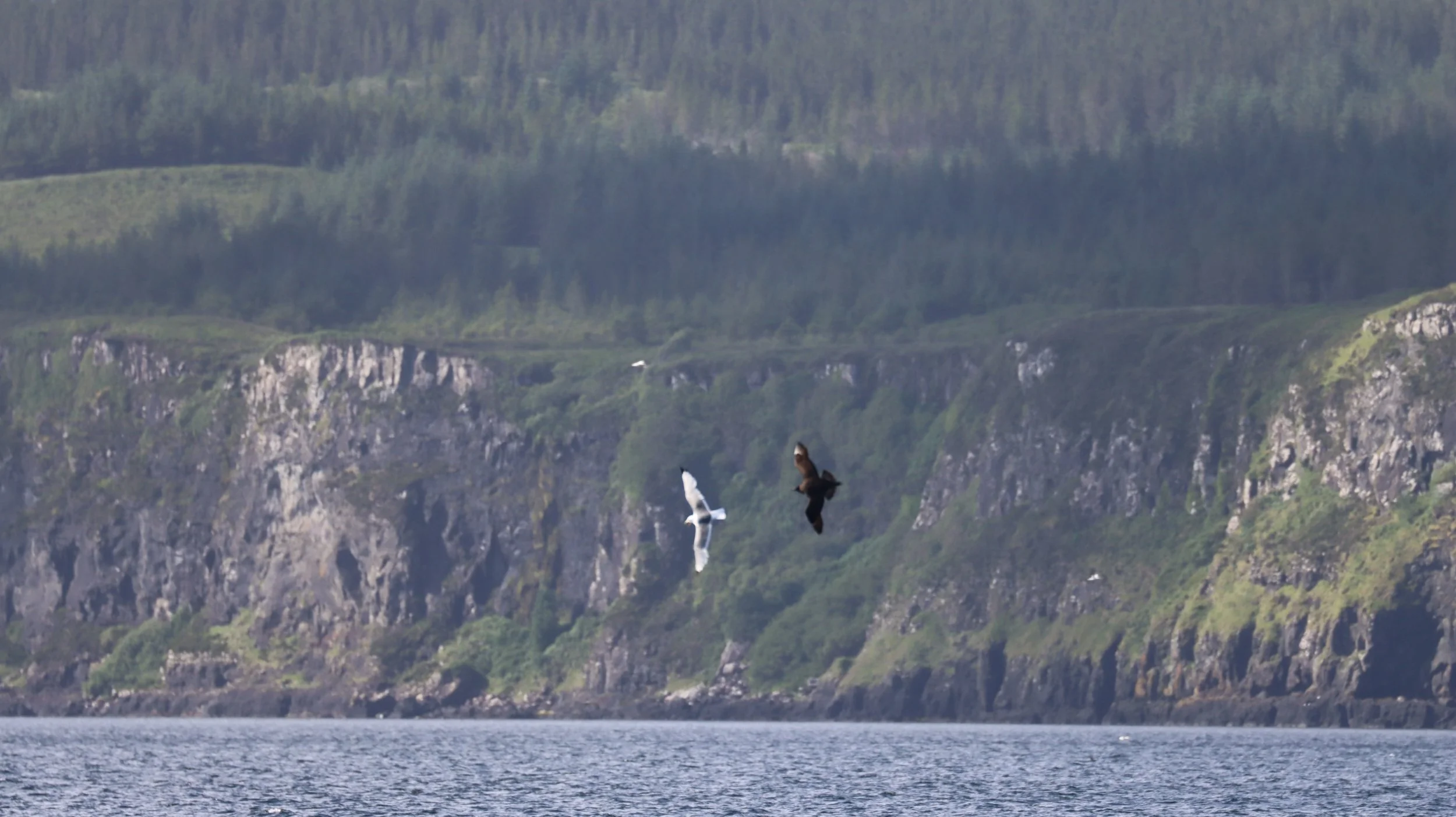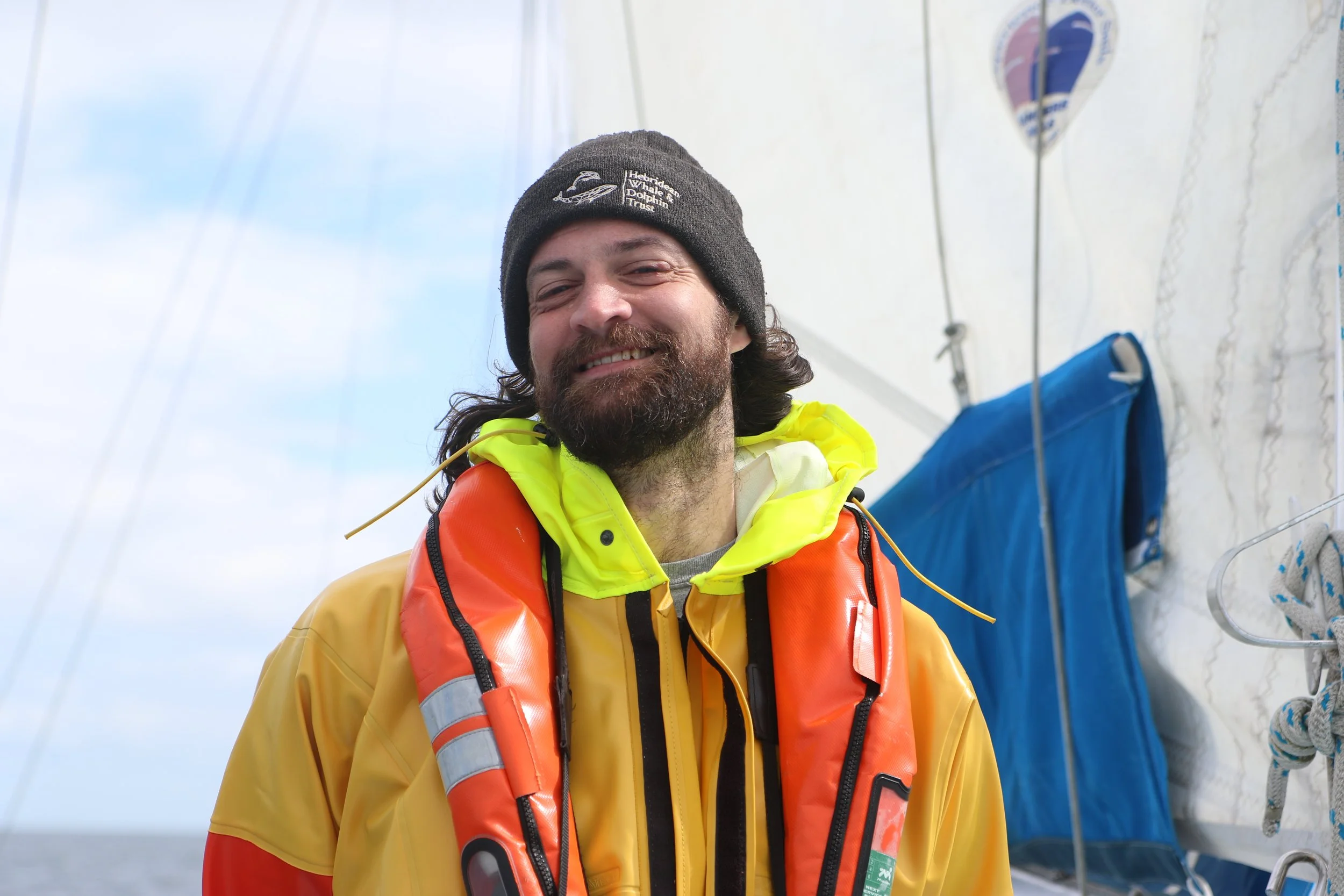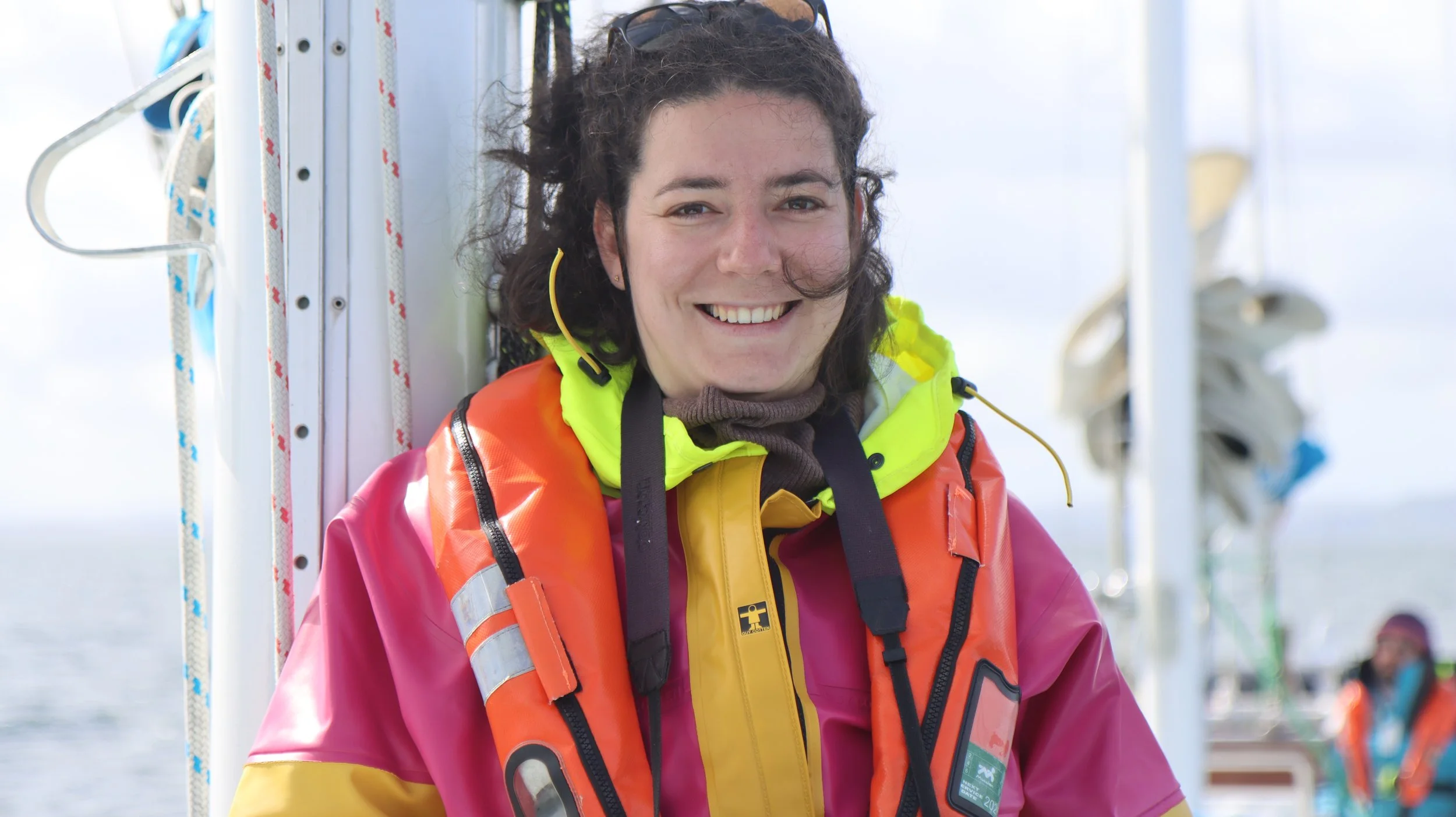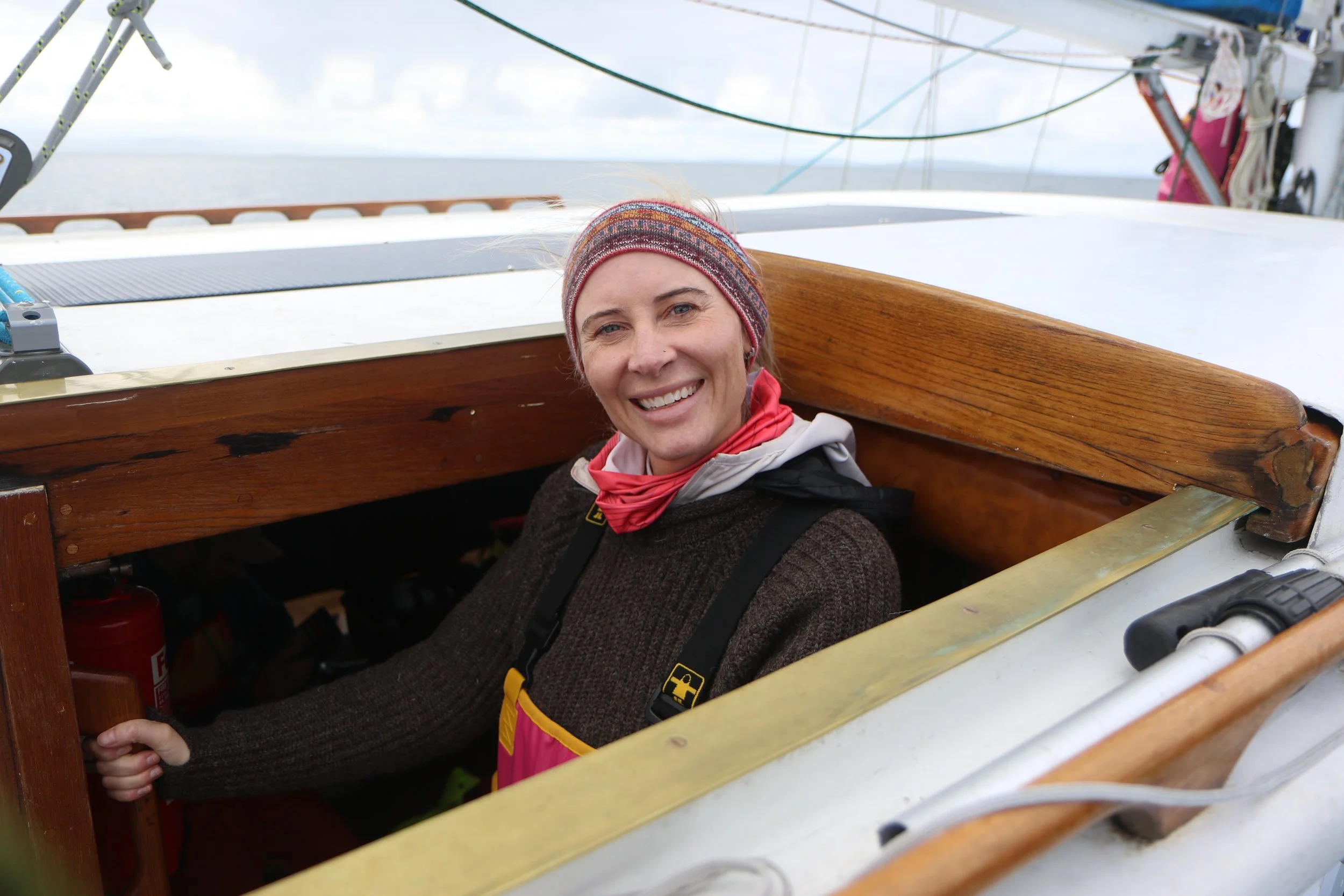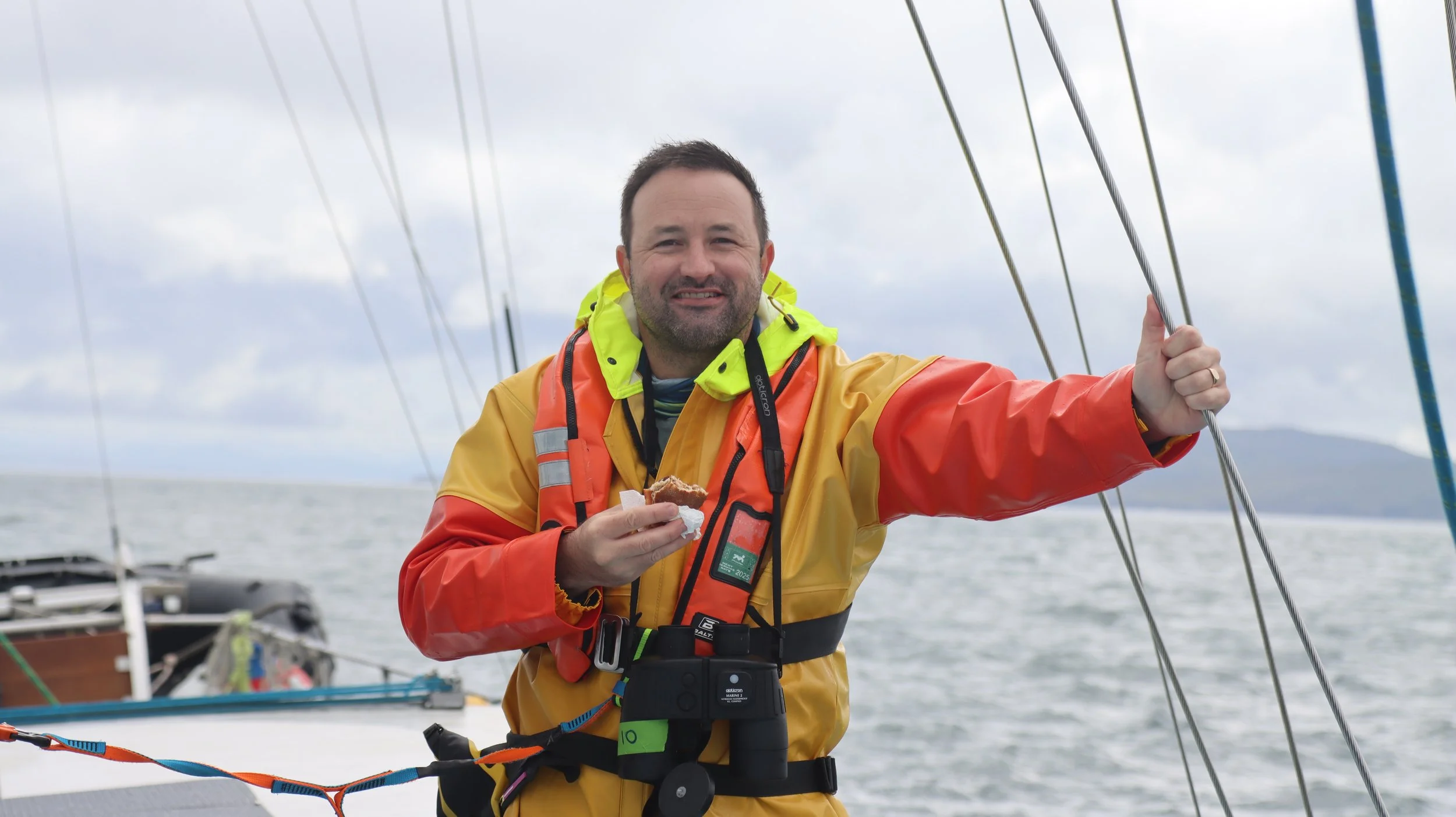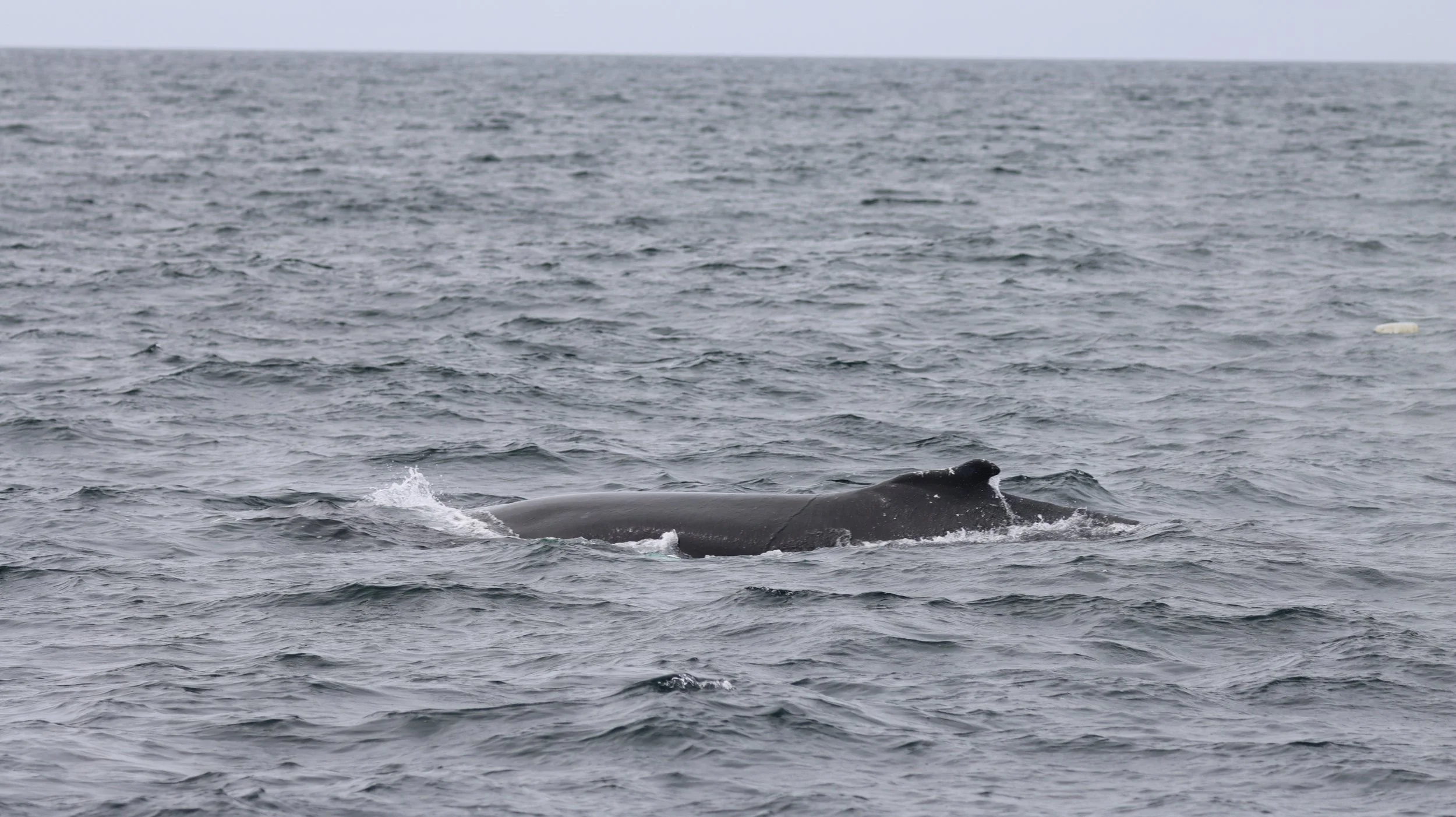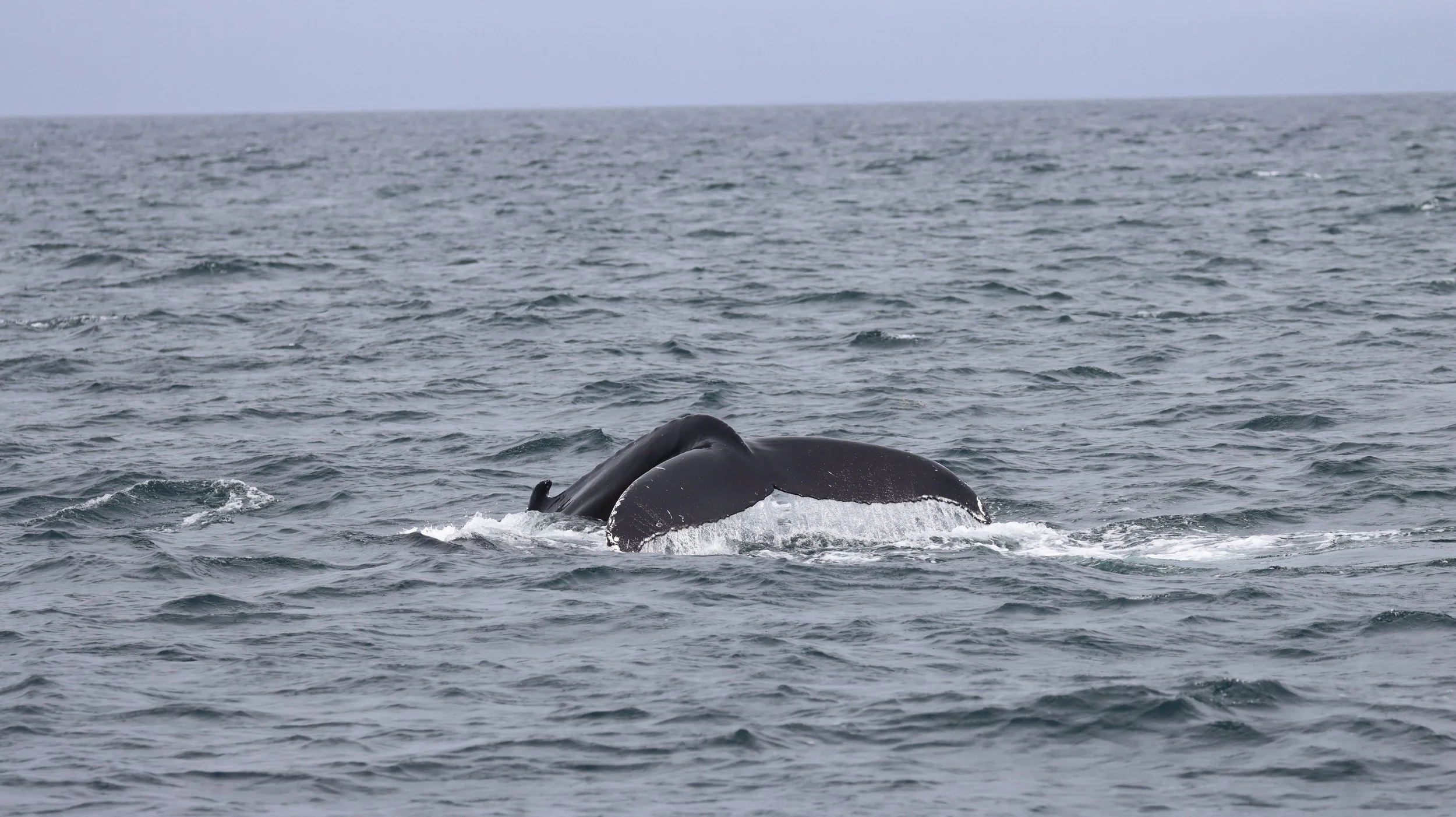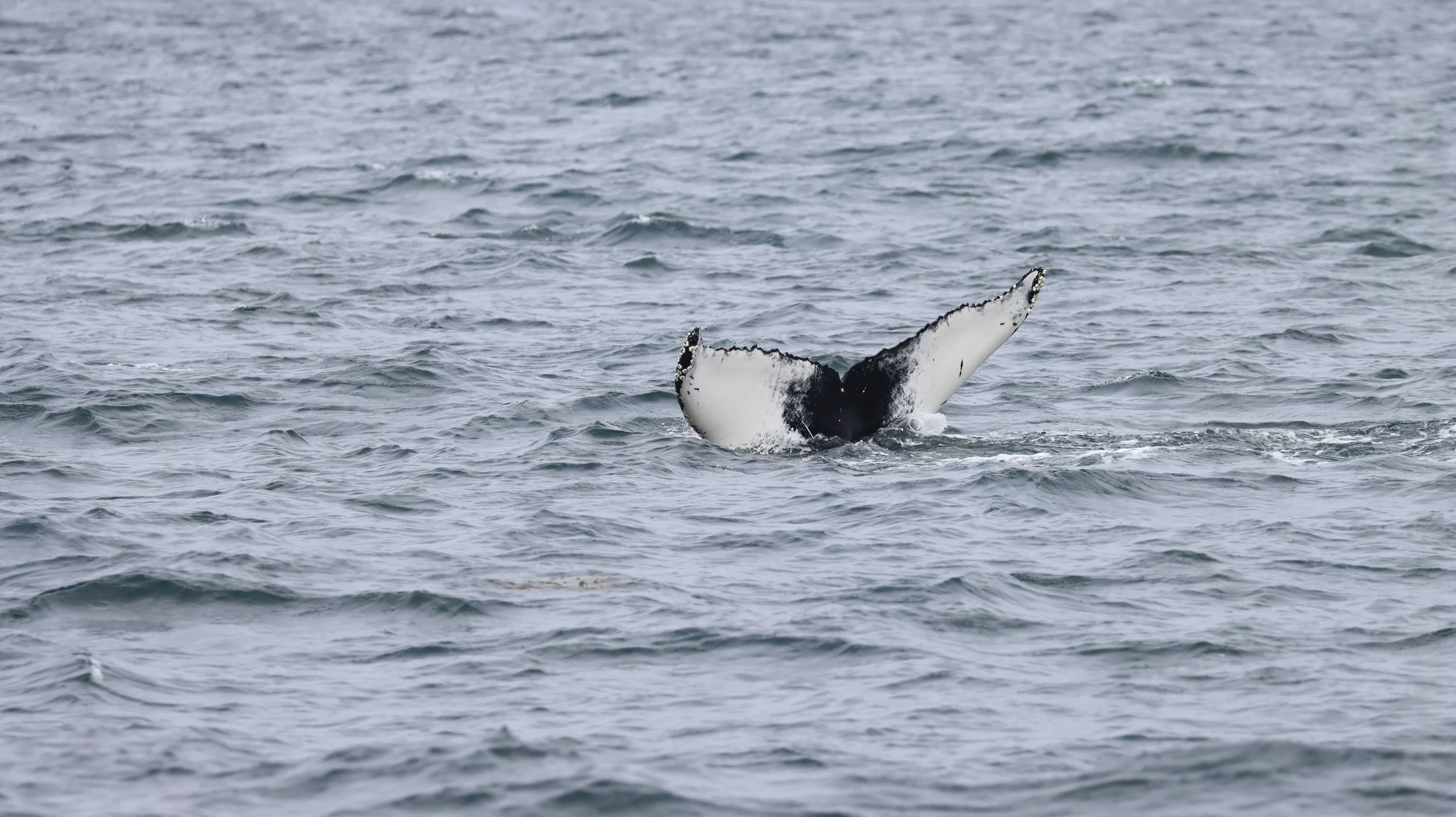First humpback whale encountered during 2025 field season!
Over twelve days at sea, our intrepid team of citizen scientists surveyed 590km of Hebridean waters. Living and working aboard Silurian, HWDT’s dedicated research vessel, the team were rewarded with a moment to remember. Amongst a multi-species feeding frenzy, the first humpback whale of the season made a spectacular appearance. Read all about their experiences here…
Each field season (April - Oct), we set sail on research expeditions across Scotland’s west coast, inviting passionate individuals to join us in safeguarding marine life. By collecting vital data, these hands-on voyages are helping to deepen the understanding of species and drive real change to protect the whales, dolphins, and porpoises in Scotland’s seas.
From common dolphins bow-riding and minke whales breaching, to a stunning sighting of a humpback whale surfacing repeatedly, wildlife encounters came thick and fast despite stormy seas and stormbound days. On day two, just north of the Isle of Canna, we encountered a multi-species feeding frenzy! Hundreds of diving gannets, auks, gulls and Manx shearwaters were involved, with common dolphins joining the mix. Multiple minke whales were spotted lunge feeding amongst the birds and dolphins, surfacing so close we could smell their breath! Then, the highlight: our first humpback whale of the season appeared, blowing and surfacing repeatedly amongst the minke whales and common dolphins, offering clear views of its tail fluke. An incredibly magical moment, no one aboard could quite believe what they had witnessed, giving everyone hope for marine life within our seas. Expedition highlights included: deck‑side sea shanties; the Silurian Music Quiz; heroic galley bakes (lemon drizzle, chocolate brownies, bread); swims around Silurian (rapidly halted by a Lion’s mane jellyfish alert); a film night in a gale; and the celebratory pub stop in Loch Boisdale.
Despite several stormbound days, the crew gathered 60 hours of data collection surveying 590km of coastal and offshore waters, including the east coast of the Outer Isles! Recording 179 marine mammal sightings, the survey team encountered seven species of marine mammal, including: grey seals, common seals, harbour porpoise, common dolphins, Risso’s dolphins, minke whales and a humpback whale!! Bird highlights include huge hurries of diving gannets and Manx shearwaters as well as a great skua ‘drowning’ a gannet; Arctic skuas, storm petrels and over 1000 puffins.
Spotting a humpback whale during this survey was especially meaningful, as records of humpbacks are rare during expeditions. Humpbacks migrate widely across the northeast Atlantic, and by photographing their distinctive tail flukes and markings, we can identify individual animals. Through collaboration with researchers and organisations studying humpbacks across the region, we share these images to help track their movements between different areas. This international effort not only deepens our understanding of their migratory patterns but also highlights the critical habitats they depend on, informing targeted conservation measures to protect these majestic animals for future generations.
A HUGE THANK YOU TO OUR TEAM OF CITIZEN SCIENTISTS WHO JOINED THIS EXPEDITION: CRAIG, JENN, BECKY, MAELLE, DAN AND JULIE.
Throughout the twelve-day voyage, the expedition team surveyed 590km of waters along Scotland’s West Coast, recording 179 marine mammal sightings spanning seven different species and accumulating 60 hours of data collection.

